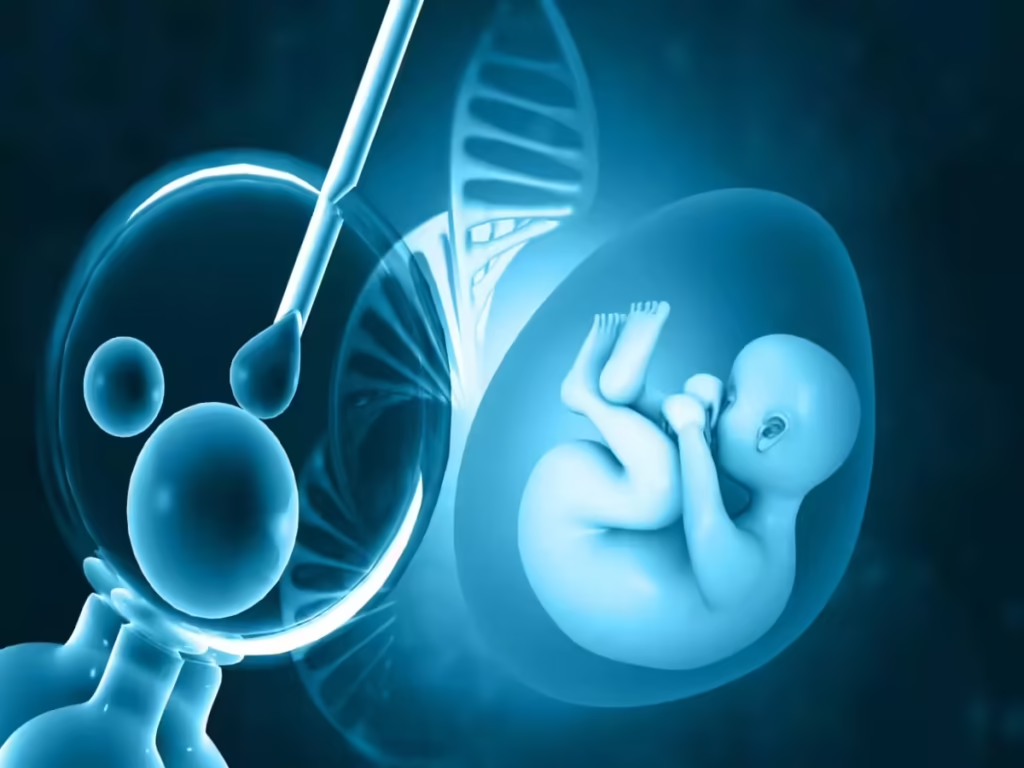Medical science continues to amaze us. One of the most groundbreaking advancements in recent years is the 3-person IVF technique—a revolutionary method that is changing the future of reproduction and giving families hope. This new IVF method goes beyond helping couples conceive; it prevents children from inheriting severe genetic diseases passed down through their mother’s DNA. For many parents, it’s not just about having a baby—it’s about having a healthy baby.
In this article, we’ll explore what the 3-person IVF technique is, how it works, the science behind it, and how it’s already saving children from inherited illnesses. We’ll also look into the ethical debates and the potential future of this life-changing medical procedure.
What is the 3-Person IVF Technique?
The 3-person IVF technique is a fertility treatment that involves DNA from three different people—two women and one man. It’s officially known as mitochondrial donation or mitochondrial replacement therapy (MRT). The goal is simple yet profound: prevent mitochondrial diseases, which are inherited through the mother’s side, from being passed on to the child.
Mitochondria are the tiny energy factories inside almost every cell in the body. They have their own DNA, separate from the nuclear DNA we inherit from both parents. If a woman’s mitochondria are faulty, she can pass dangerous genetic diseases to her children. These diseases can affect the brain, muscles, heart, and other vital organs, often with devastating results.
With 3-person IVF, doctors use healthy mitochondria from a donor woman, ensuring the baby doesn’t inherit the mother’s defective mitochondrial DNA.
How Does the 3-Person IVF Technique Work?
Let’s break it down in a simple way:
- Eggs from two women are taken—one from the biological mother (with faulty mitochondria) and one from a healthy donor (with good mitochondria).
- The nucleus (which contains the DNA for traits like eye color, height, intelligence, etc.) is removed from the donor egg and replaced with the nucleus from the mother’s egg.
- This new egg now contains:
- The mother’s nuclear DNA
- The donor’s healthy mitochondrial DNA
- The egg is then fertilized by the father’s sperm and implanted into the mother’s womb.
The result? A child who carries genetic material from three people:
- Nuclear DNA from the mother and father (which determines most traits)
- Mitochondrial DNA from the donor woman (which ensures proper energy function in cells)
Though only a tiny portion of DNA comes from the donor, it plays a crucial role in preventing serious diseases.
Why Was the 3-Person IVF Technique Needed?

Mitochondrial diseases are rare but extremely serious. They can cause:
- Muscle weakness
- Seizures
- Organ failure
- Diabetes
- Hearing and vision loss
- Neurological disorders
- Even early death in infants
These diseases are incurable and often untreatable. For many families, the only hope was not to conceive naturally. That’s where this new technique changes everything.
In 2016, the UK became the first country to legalize the 3-person IVF technique under strict regulations. Since then, countries like Australia, the U.S. (in limited cases), and Greece have also started exploring or offering this method.
Real Stories: Children Saved by the 3-Person IVF Technique
In 2023, reports from the UK and other clinics revealed healthy babies born using the 3-person IVF technique. These children are free from the genetic disorders their siblings or relatives previously suffered.
A British couple, who lost two babies to mitochondrial disease, were among the first to try this method. Today, they are parents to a healthy daughter thanks to the technique. Their story is a living example of how science can rewrite destiny.
Another family in the U.S. gave birth to a boy through this method after four miscarriages due to mitochondrial abnormalities. For them, this was nothing short of a miracle.
What Makes 3-Person IVF Different from Traditional IVF?
| Aspect | Traditional IVF | 3-Person IVF |
|---|---|---|
| Egg Source | Mother only | Mother + Donor |
| DNA Contributors | 2 (Mother & Father) | 3 (Mother, Father, Donor) |
| Purpose | Help with conception | Prevent genetic diseases |
| Mitochondrial DNA | Inherited from mother | Inherited from donor |
Traditional IVF focuses only on fertilization and embryo development, while 3-person IVF goes a step further by replacing defective mitochondria to ensure the child’s long-term health.
The Science Behind the Scenes
At the heart of this method is mitochondrial DNA, which makes up less than 1% of our total genetic material. Still, this small amount is vital for cell energy production.
Mitochondrial replacement therapy is performed using two main techniques:
- Maternal Spindle Transfer (MST): Before fertilization, the mother’s nucleus is placed into the donor egg (after its nucleus is removed), and then it is fertilized.
- Pronuclear Transfer (PNT): After fertilization, the nuclei from the parents’ egg and sperm are moved into a donor zygote (which has had its own nucleus removed).
Both methods aim to produce a healthy embryo without the risk of mitochondrial disease.
Is the Baby Genetically Related to the Donor?
This is a common question. The child born from a 3-person IVF technique has less than 0.1% of their DNA from the donor. This donor DNA does not influence physical traits, personality, or identity. It only helps the body function correctly by producing energy in cells.
So, the child is genetically the couple’s own—but with a little help from science.
Ethical Questions and Global Reactions
While the science is strong, the ethics of 3-person IVF remain debated.
Critics argue that:
- It may open the door to “designer babies.”
- Long-term effects are still unknown.
- Children might want to know their donor’s identity later in life.
Supporters argue:
- It prevents deadly diseases.
- It gives families a chance at having healthy biological children.
- The donor’s role is purely medical, not parental.
Globally, acceptance varies:
- UK and Australia: Regulated and allowed
- U.S.: Allowed in clinical trials
- Japan and Germany: Not yet approved
- Religious groups: Some support it, while others oppose it
In 2023, the UK’s Human Fertilisation and Embryology Authority confirmed that several children had been born using this technique—and are doing well. Still, each case is closely monitored to ensure long-term safety.
Potential Risks and Limitations
Though promising, 3-person IVF is not without concerns:
- Cost: It’s expensive and not widely available.
- Side effects: Some fear the child may still develop issues later in life.
- Mismatch issues: If some faulty mitochondria are accidentally carried over, disease could still occur.
Researchers are continuing long-term studies to understand the health of children born via this technique.
The Future of 3-Person IVF
The 3-person IVF technique is more than just a new fertility method—it’s a symbol of what science and compassion can achieve together. While it may not be for everyone, it offers a beacon of hope for families haunted by genetic disease.
In the next few years, we can expect:
- Expanded access in more countries
- Improved techniques with higher success rates
- Stronger ethical guidelines
- More real-world stories of healthy, happy children
The dream of having a child free from inherited disease is now possible—not through luck, but through innovation.
Final Thoughts
The 3-person IVF technique represents a powerful breakthrough in modern medicine. It gives families a chance to end the cycle of suffering caused by inherited mitochondrial diseases. While it still raises important questions, one thing is clear—it’s already changing lives for the better.
For couples facing the fear of passing on genetic illnesses, this technique offers hope, health, and happiness. And in the hands of skilled doctors and scientists, that hope is now becoming reality.
Read Next – Trump Says Coca-Cola is Switching: Cane Sugar vs. High-Fructose Corn Syrup






